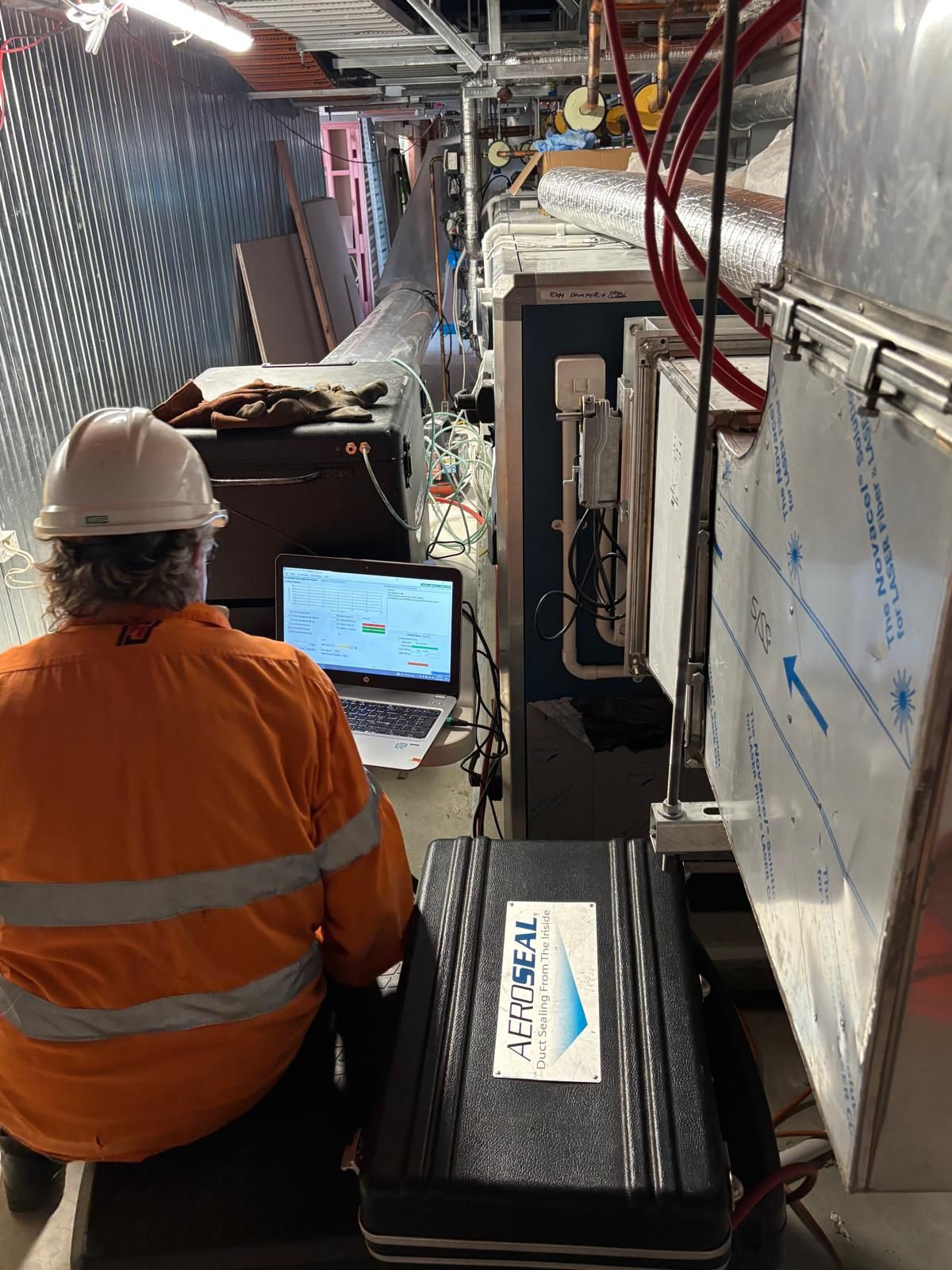How Aeroseal Helps You Meet Building Code Compliance and Performance Standards in New Zealand
If you're a contractor or builder in New Zealand, you know how important building code compliance and performance standards are.
It’s not just about ticking boxes—it’s about ensuring the buildings you create are energy-efficient, comfortable, and safe, so you can obtain your code compliance certificate. Traditional methods of sealing ducts and building envelopes can be challenging, with no guarantee that manual sealing will pass the required inspections and tests. Aeroseal offers a modern, effective, and easier-to-use solution.
Why Building Performance Standards and Codes Matter in New Zealand
Meeting building code compliance can be complex, with various requirements for energy efficiency, indoor air quality, and overall building performance. Aeroseal's duct and envelope-sealing technologies are designed to help you meet code without the stress. Let's examine how Aeroseal aligns with New Zealand's standards.
New Zealand Building Code Clause H1: Energy Efficiency
Clause H1 of the New Zealand Building Code sets the standards for energy efficiency in buildings, aiming to reduce energy consumption for heating, cooling, and lighting. It focuses on:
- Building Envelope Performance: This includes insulation levels, thermal bridging, and air tightness to minimize heat loss or gain.
- HVAC System Efficiency: Heating, ventilation, and air conditioning systems must meet minimum efficiency requirements.
- Lighting Efficiency: The code encourages the use of energy-efficient lighting systems.
Aeroseal can significantly contribute to meeting these requirements by:
- Improving Building Envelope Air Tightness: By sealing leaks in the building envelope, Aeroseal reduces drafts and heat loss, improving overall energy efficiency.
- Optimizing HVAC System Performance: Sealing ductwork minimizes energy loss, ensuring the HVAC system operates efficiently and reduces energy waste.
New Zealand Standard NZS 4214: Methods of Determining the Thermal Resistance of Thermal Insulation
This standard provides methods for calculating the thermal resistance (R-value) of insulation materials used in buildings. While Aeroseal is not an insulation material, it complements insulation by improving the overall thermal performance of the building envelope.
Compliance Document H1/AS1
This document outlines acceptable solutions for meeting the requirements of Clause H1. It includes specific performance criteria for building elements like walls, roofs, and floors. Aeroseal can help achieve these criteria by reducing air leakage and improving the effectiveness of insulation.
Other Relevant Standards
- NZS 4303: Ventilation for Acceptable Indoor Air Quality: Aeroseal ensures that ventilation systems operate as intended by sealing ductwork and preventing unwanted air leakage.
- NZS 3504: Natural Ventilation of Buildings: By reducing uncontrolled air leakage, Aeroseal helps maintain the intended natural ventilation performance of a building.
Aeroseal vs. Traditional Methods: Why Go Modern?
Traditional duct and envelope sealing methods can be labor-intensive, prone to errors, and often require rework to meet today’s building codes. Aeroseal offers a modern approach that’s more effective and efficient.
- Better at Sealing Leaks: Aeroseal uses aerosolized particles that find and seal leaks automatically, even in hard-to-reach places. Traditional methods, like mastic sealant or foil tape, require manual application, which can miss leaks.
- Easier to Apply: Aeroseal is automated and takes just a few hours, depending on the job size. Traditional methods can be time-consuming and labor-intensive.
- More Consistent Results: Aeroseal delivers consistent results every time, with no guesswork or missed spots. Traditional methods rely on the installer's skill, leading to inconsistent results.
- Quicker Compliance: Aeroseal speeds up the process, helping you achieve compliance faster and with less hassle. Traditional methods often require multiple passes and extensive testing.
- Long-Term Durability: Aeroseal’s seals are durable and long-lasting. Traditional materials like mastic or tape can deteriorate over time, increasing leakage and reducing efficiency.
Wrapping It Up: Why Aeroseal is the Future of Building in New Zealand
Aeroseal's duct and envelope sealing technologies offer a better way to meet and exceed building codes and performance standards in New Zealand. They’re more effective, easier to apply, and deliver consistent, reliable results, helping you achieve Code Compliance and create energy-efficient, comfortable, and healthy buildings.
For more information, contact:
To Learn More About Improving The Comfort, Indoor Air Quality, and Energy Efficiency Of Your Building Call 0226759426 or Email info@aeroseal.nz





